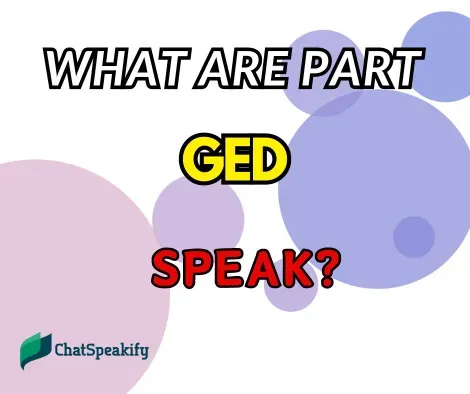Embarking on the journey to tackle the General Educational Development (GED) test can be both exciting and daunting. One fundamental aspect of mastering the language arts portion is understanding the parts of speech. These are essentially the building blocks of grammar that help us construct meaningful and coherent sentences. Let’s delve into each part of speech, illustrated with examples, to comprehend how they function and how they can enhance your GED preparation.
1. Nouns: The Naming Words
Nouns are words that name people, places, things, or ideas. They are the subjects and objects of sentences, giving substance to what we talk about.
People: “Engineer,” “nurse,” “student”
Places: “London,” “library,” “park”
Things: “Computer,” “bicycle,” “pizza”
Ideas: “Creativity,” “peace,” “knowledge”
Example Sentence: The engineer designed a new bridge for the city.
2. Pronouns: The Replacing Words
Pronouns replace nouns in a sentence, preventing repetition and keeping sentences concise.
Personal Pronouns: “I,” “you,” “he,” “she,” “it,” “we,” “they”
Possessive Pronouns: “Mine,” “yours,” “his,” “hers,” “ours,” “theirs”
Reflexive Pronouns: “Myself,” “yourself,” “himself,” “herself,” “itself,” “ourselves,” “themselves”
Example Sentence: They completed the project themselves and were very proud.
3. Adjectives: The Descriptive Words
Adjectives describe nouns and pronouns, providing more detail about them. They answer questions like which one, what kind, and how many.
Quality: “Beautiful,” “red,” “short”
Quantity: “Three,” “few,” “several”
Size and Shape: “Large,” “square,” “small”
Example Sentence: The red car is faster than the old car.
4. Verbs: The Action Words
Verbs express actions, states, or occurrences. They are essential for forming sentences as they indicate what the subject is doing.
Action Verbs: “Dance,” “sing,” “read”
Linking Verbs: “Is,” “seem,” “become”
Auxiliary Verbs: “Have,” “be,” “do” (when used with other verbs)
Example Sentence: She dances every evening and feels energized afterwards.
5. Adverbs: The Modifying Words
Adverbs modify verbs, adjectives, or other adverbs, providing more information about how, when, where, to what extent, and why.
How: “Slowly,” “carefully,” “well”
When: “Today,” “soon,” “later”
Where: “Here,” “there,” “everywhere”
To What Extent: “Very,” “too,” “quite”
Example Sentence: He completed the homework carefully and efficiently.
6. Prepositions: The Relationship Words
Prepositions show relationships between nouns (or pronouns) and other words in a sentence, often indicating location, direction, time, or manner.
Location: “On,” “in,” “under”
Direction: “To,” “towards,” “through”
Time: “Before,” “after,” “during”
Example Sentence: The cat is under the table and the book is on the shelf.
7. Conjunctions: The Connecting Words
Conjunctions link words, phrases, or clauses, ensuring coherence and flow in sentences.
Coordinating Conjunctions: “And,” “but,” “or,” “nor,” “for,” “so,” “yet”
Subordinating Conjunctions: “Although,” “because,” “since,” “unless”
Correlative Conjunctions: “Either…or,” “neither…nor,” “both…and”
Example Sentence: She wanted to go to the park, but it started raining.
8. Interjections: The Exclamatory Words
Interjections are words or phrases that express strong emotion or sudden bursts of feeling. They often stand alone.
Examples: “Wow!,” “Ouch!,” “Hey!,” “Oh no!”
Example Sentence: Wow! That was an amazing performance.
Wrap-Up and Tips
Understanding and mastering the parts of speech is crucial for the GED language arts test. It enables you to analyze sentence structure more effectively, comprehend reading passages fully, and improve your writing skills.
To further deepen your knowledge, consider using resources such as:
Remember, practice is key to mastering these concepts. Engage in exercises that challenge you to identify and use parts of speech correctly. This not only helps in the GED test but also in refining your overall communication skills. Happy studying, and good luck on your journey to achieving that GED certification!
